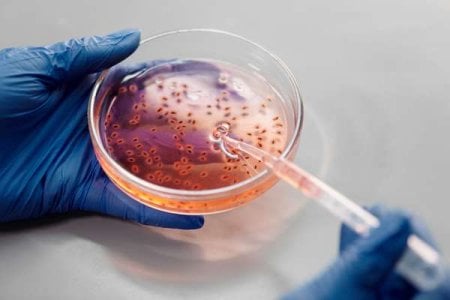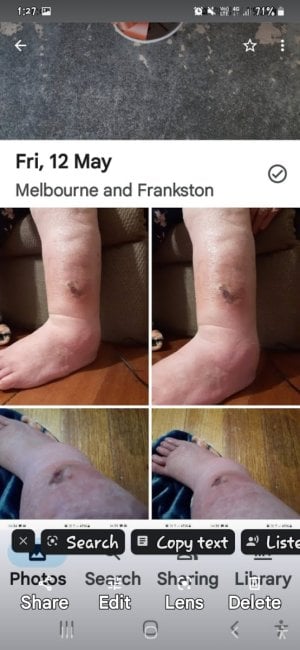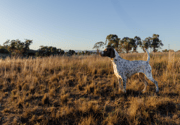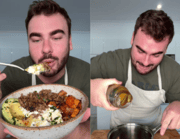Cases of fatal bacterial infection surge across Australia
- Replies 23
More and more people in Australia are facing a flesh-eating bacterial infection that carries with it a risk of death or permanent impairment.
This infection is known as Strep A, and according to research from the Murdoch Children's Research Institute (MCRI), the number of children requiring hospital admission due to the infection is on the rise.
The bacterium, group A streptococcus, is responsible for killing as many as 500,000 people every year and can be especially dangerous for young children.
This was a lesson Sandeep Kaur learned the hard way.
Kaur's one-year-old daughter, Gursirat, was left fighting for her life after being infected with Strep A earlier this year.

The child was diagnosed with kidney failure, a liver infection, and necrosis on seven of her fingertips—all results of the disease taking hold. It was a traumatic experience, one that Kaur described as 'difficult', with Gursirat needing two operations and twelve days of dialysis.
Fortunately, Gursirat's fingertips were saved. However, Kaur still hopes that technology, in the form of a vaccine, will be developed soon so that no other family has to go through this situation.
But what is Strep A, and what makes it so dangerous?
Strep A bacterial infections are quite common during childhood, usually resulting in short and minor illnesses that can be treated with antibiotics. These bacteria spread through close contact, such as sneezing, coughing, or contact with an infected wound.
However, in rare and seemingly random instances, Strep A infections can lead to a severe condition called invasive group A streptococcal disease (iGAS). This serious illness can cause complications like sepsis, tissue damage, amputations, and even death.
While still uncommon, the number of cases of invasive Strep A has increased over time. For instance, in Australia, the rate of this condition has risen from 3.7 cases per 100,000 children in 2018 to 5.2 cases per 100,000 children in the third quarter of 2022, according to a study published in the Lancet Regional Health. In 2020, there were 23 cases of this condition in children, which increased to 107 cases in 2022.
Because of the rise in cases, experts in infectious diseases are urging for more funding and a sense of urgency in developing a Strep A vaccine for vulnerable groups like young children, seniors, pregnant women, and Indigenous Australians, who are more prone to experiencing severe complications from Strep A infections.
While a vaccine for this infection might not be available yet, the most reliable method to avoid contracting or transmitting Group A Strep is by practising frequent handwashing. This is particularly crucial after coughing, sneezing, and before handling food or eating.
Dr Yara-Natalie Abo from Murdoch Children's Research Institute pointed out that even though there are variations in seasons and viruses that are active, the increase in cases observed in Australia closely resembled the patterns seen in the northern hemisphere.
She explained, 'Increases in Strep A cases have been reported around the world, occurring during, and outside of, typical spring peaks. This increase is likely due to a combination of environmental factors and viruses in circulation, and more research is needed into whether new strains might be responsible.'
A team of researchers in Melbourne is working relentlessly to find a solution for this infection.
They are launching trials involving fifty participants who will receive a candidate vaccine or a placebo, and they are also studying the link between genetics and infectious diseases. They are utilising advanced equipment and algorithms to identify the genes that could be used in treatment or vaccination.
At the root of this study is the mission to roll out a vaccine that will 'save hundreds of thousands of lives every year and prevent millions of infections that send children and adults to the hospital or doctor'.

Strep A is a severe infection that requires serious attention. It's important to consult your GP to learn about the most effective preventive steps you can take.
Stay safe and well, folks! Share your thoughts in the comments below.
This infection is known as Strep A, and according to research from the Murdoch Children's Research Institute (MCRI), the number of children requiring hospital admission due to the infection is on the rise.
The bacterium, group A streptococcus, is responsible for killing as many as 500,000 people every year and can be especially dangerous for young children.
This was a lesson Sandeep Kaur learned the hard way.
Kaur's one-year-old daughter, Gursirat, was left fighting for her life after being infected with Strep A earlier this year.

Cases of a bacterial infection known as Strep A are surging across Australia. Credit: Pexels/Edward Jenner.
The child was diagnosed with kidney failure, a liver infection, and necrosis on seven of her fingertips—all results of the disease taking hold. It was a traumatic experience, one that Kaur described as 'difficult', with Gursirat needing two operations and twelve days of dialysis.
Fortunately, Gursirat's fingertips were saved. However, Kaur still hopes that technology, in the form of a vaccine, will be developed soon so that no other family has to go through this situation.
But what is Strep A, and what makes it so dangerous?
Strep A bacterial infections are quite common during childhood, usually resulting in short and minor illnesses that can be treated with antibiotics. These bacteria spread through close contact, such as sneezing, coughing, or contact with an infected wound.
However, in rare and seemingly random instances, Strep A infections can lead to a severe condition called invasive group A streptococcal disease (iGAS). This serious illness can cause complications like sepsis, tissue damage, amputations, and even death.
While still uncommon, the number of cases of invasive Strep A has increased over time. For instance, in Australia, the rate of this condition has risen from 3.7 cases per 100,000 children in 2018 to 5.2 cases per 100,000 children in the third quarter of 2022, according to a study published in the Lancet Regional Health. In 2020, there were 23 cases of this condition in children, which increased to 107 cases in 2022.
Because of the rise in cases, experts in infectious diseases are urging for more funding and a sense of urgency in developing a Strep A vaccine for vulnerable groups like young children, seniors, pregnant women, and Indigenous Australians, who are more prone to experiencing severe complications from Strep A infections.
While a vaccine for this infection might not be available yet, the most reliable method to avoid contracting or transmitting Group A Strep is by practising frequent handwashing. This is particularly crucial after coughing, sneezing, and before handling food or eating.
Dr Yara-Natalie Abo from Murdoch Children's Research Institute pointed out that even though there are variations in seasons and viruses that are active, the increase in cases observed in Australia closely resembled the patterns seen in the northern hemisphere.
She explained, 'Increases in Strep A cases have been reported around the world, occurring during, and outside of, typical spring peaks. This increase is likely due to a combination of environmental factors and viruses in circulation, and more research is needed into whether new strains might be responsible.'
A team of researchers in Melbourne is working relentlessly to find a solution for this infection.
They are launching trials involving fifty participants who will receive a candidate vaccine or a placebo, and they are also studying the link between genetics and infectious diseases. They are utilising advanced equipment and algorithms to identify the genes that could be used in treatment or vaccination.
At the root of this study is the mission to roll out a vaccine that will 'save hundreds of thousands of lives every year and prevent millions of infections that send children and adults to the hospital or doctor'.
Key Takeaways
- Cases of a flesh-eating bacterial infection known as Strep A are surging across Australia, with researchers working on a vaccine.
- The number of children admitted to hospital with the infection rose from 23 in 2020 to 107 in 2022.
- The bacterium Strep A, commonly found in the throat and on the skin, can be deadly and cause permanent disabilities if it develops into invasive Strep A.
- There is currently no vaccine to prevent Strep A, but a group in Melbourne is conducting trials in hopes of accelerating the development.
Strep A is a severe infection that requires serious attention. It's important to consult your GP to learn about the most effective preventive steps you can take.
Stay safe and well, folks! Share your thoughts in the comments below.









